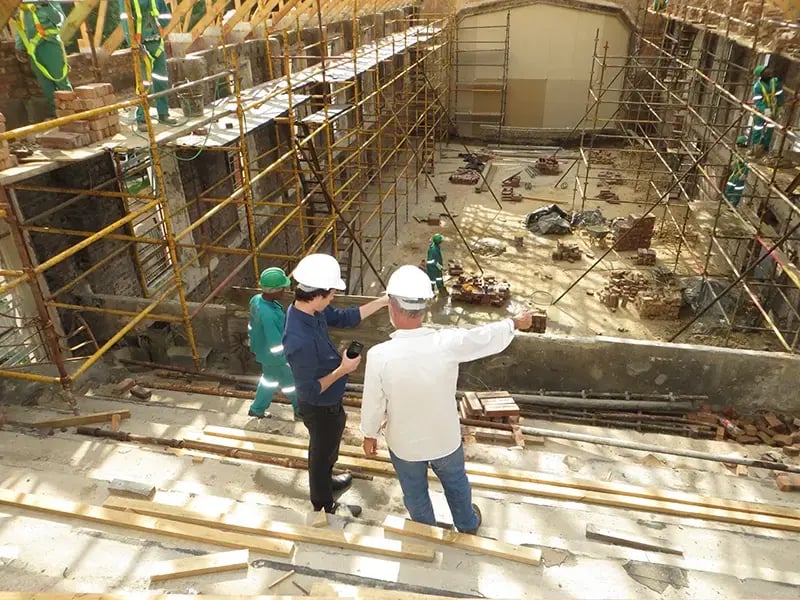The Community Infrastructure Levy (CIL) can be tricky – and expensive.
We look at strategies for avoiding common CIL missteps and making the process as risk-free as possible.
But, before we delve into these tips, let’s take a look at what CIL actually is.
What is community infrastructure levy?
CIL is different from the other well-known source of developer contributions, Section 106. While Section 106 exists to provide a bespoke legal framework for the delivery of works or funds that are required to make a development acceptable when otherwise it would not be; CIL provides a set charge, calculated by area of new development, to fund specific pieces of community infrastructure.
Or, as Gov.uk put it:
“The Community Infrastructure Levy (the ‘levy’) is a charge which can be levied by local authorities on new development in their area. It is an important tool for local authorities to use to help them deliver the infrastructure needed to support development in their area.”
In order to be funded through CIL, the need for the infrastructure must have been assessed and included on the ‘Regulation 123’ list, which is subject to independent examination as part of the local planning authority’s (LPA) Local Plan.
How much is community infrastructure levy?
CIL charges are based on the local infrastructure needs of an area – and they can vary wildly.
Areas of planned growth (or areas that have been subject to a historic lack of development) generally have higher CIL charges because more community infrastructure tends to be required in these areas.
Local authorities can set a consistent CIL charge for the whole borough, but there’s also the potential for one authority to have multiple charging zones - allowing more funding to be drawn from developments that will make use of the infrastructure, once delivered.
Who pays community infrastructure levy?
Whoever owns the land in which the development in question is set to be built is liable for paying CIL.
Often, this will be the developer. But in cases where the developer hasn’t purchased the land yet, they will usually take on some or all of the CIL liability.

Changes to Community Infrastructure Levy and Section 106
In March, the Government released a technical consultation on the Infrastructure Levy. The inference is that changes are afoot in Whitehall that may affect how developer contributions are calculated and charged.
We’ll keep an eye on this as it develops and will keep you up to date with any substantial news.
Whatever happens, the suggestion is that any change will be brought in gradually over about ten years, so there’s no need to revisit the spreadsheets just yet.
Five tips to cut your CIL liability
Despite the relative rigidity of the CIL charging system, there are things you can do to manage your liability.
- Be proactive
It’s worth being proactive with CIL as you’ll give yourself more time to research and budget for the levy charge.
You should start calculating CIL costs as early as possible as it can give you a better understanding of the likely viability of the development you’re looking at.
Further along in the process when you get your CIL liability notice, it’s worth checking it there and then. Spotting any submission errors or miscalculations early on will make it easier to get your liability notice amended promptly.
- Choose your location wisely
Because of the differing CIL charges mentioned above, it’s important that you factor this in when choosing a location to start sourcing sites.
It’s also worth noting that some local authorities don’t charge CIL, and others use a £0 CIL charge to incentivise development in certain locations. There’s the potential to save costs by developing in a neighbouring area where you wouldn’t have to pay any CIL liability.
These big differences across relatively small areas mean that planning and research are key – as you don’t want to get stung by a higher liability than originally budgeted for.

- Know the CIL exemptions
There are exemptions and exceptions to CIL, which could save you a lot of money if your project fits their criteria.
For example, the first 100 sqm of new development is generally exempt from CIL charging, unless you’re creating a new dwelling. This means that development would not be chargeable under CIL if you are just adding an extension that was under 100 sqm, and that additional 100 sqm was not creating a new dwelling.
If you’re claiming an exemption, it’s integral that you do it before you commence development or it won’t count. Try and get your exemption claims in early so you don’t slow down the process or risk missing out.
- Check for installment policies
Some councils may offer installment policies to pay off your CIL charge – but it’s not something they tend to advertise.
Normally, it has to be specifically requested with a well-evidenced reason why you can’t pay in one lump sum. It’s also more likely to be granted for large developments with significant liability.
If you genuinely can’t afford to pay CIL or it would be massively detrimental to your cash flow, don’t be afraid to ask if you can defer payment.
- Talk to CIL Officers
CIL Officers are experts at calculating charges – and they’re there to help. Sending any queries directly to them can help save you a lot of time, and you know you’re getting good advice as they’re the ones who collect the money and issue and review liability notices.
How LandFund can help
LandFund is the development finance arm of your LandTech ecosystem – helping you to effortlessly build appraisals and secure funding for your project.
Within the appraisal tool, you now have the ability to calculate the impact of CIL on your overall project costs.
There’s no need to hunt down the specific CIL charges for each LPA across the country, all this information will be instantly searchable within the product – eliminating the need for you to navigate to other platforms. From here, you can easily incorporate these costs into your appraisal and create a lender-ready report in minutes.
Want to learn more?
Find out more about how our appraisal tool can help streamline your development finance process.
Request a demo